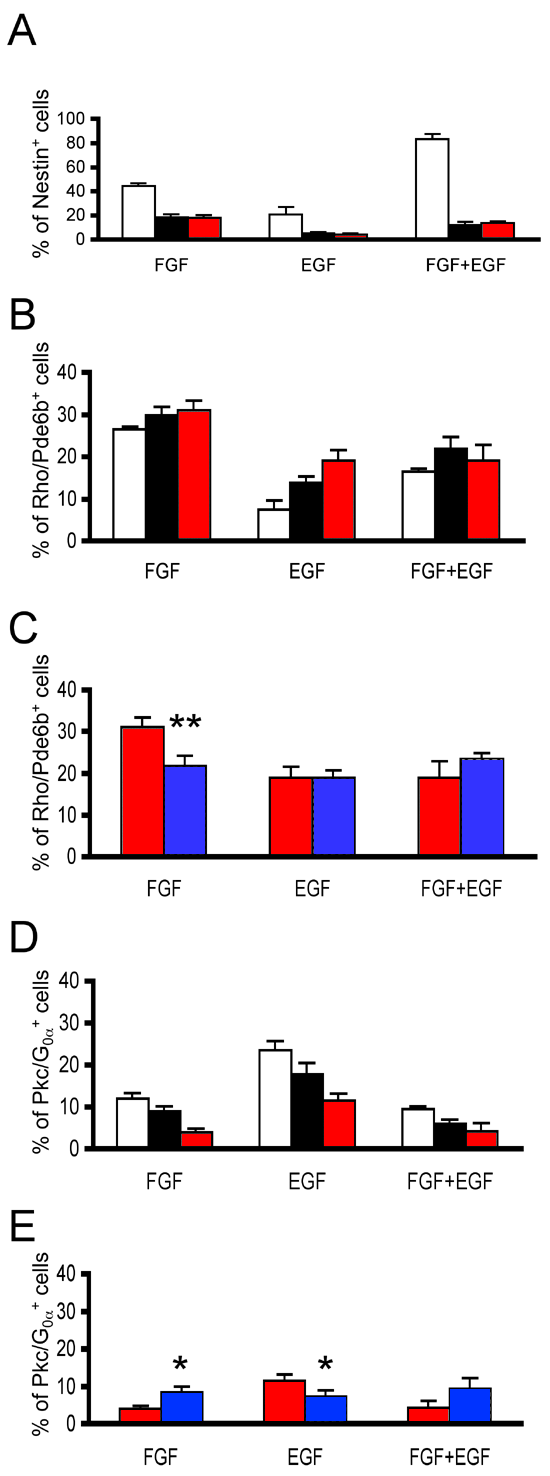![]() Figure 5 of
Giordano, Mol Vis 2007;
13:1842-1850.
Figure 5 of
Giordano, Mol Vis 2007;
13:1842-1850.
Figure 5. Differentiation time course of rod-like and bipolar-like cells
A, B, D: Primary retinal spheres were treated with either fibroblast growth factor (FGF), epidermal growth factor (EGF), or FGF+EGF and then differentiated on an extracellular matrix (ECM) substrate. Differentiation was evaluated by immunofluorescence identifying markers for either progenitors (A, positive to nestin and Pkc-α) or rod-like cells (B positive to rhodopsin and Pde6b) or bipolar-like cells (D, marked by expression of Pkc-α and G0α). Cells were analyzed after four (white bars), 13 (black bars), and 18 (red bars) days of culture. Progenitors decreased in all culture conditions while induction of rod-like cells was favored by FGF and bipolar-like cells by EGF. C, E: Primary retinal spheres were grown with FGF+EGF. At the first passage, cells were exposed to either FGF, EGF, or FGF+EGF to generate secondary retinal spheres. Secondary retinal spheres were then allowed to differentiate for 18 days. Blue bars represent percentage of rod-like cells (C) and bipolar-like cells (E) derived from secondary spheres. Red bars represent percentage of rod-like cells after 18 days of differentiation of primary spheres as shown in B and percentage of bipolar-like cells after 18 days of differentiation as shown in D. The Student t-test was used, and significance was calculated by comparing Rho/Pde6b+ or Pkc/G0α+ cells differentiated from primary cultures to those derived from secondary cultures. Asterisk (*) indicates p<0.05, and double asterisk (**) marks p<0.01.
